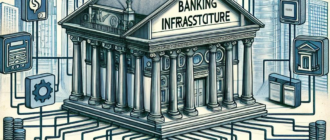In the rapidly evolving world of banking and finance, digital onboarding has emerged as a crucial component of the fintech infrastructure. This process not only facilitates a seamless customer experience but also ensures compliance with regulatory standards. In this article, we will explore the significance of digital onboarding in fintech, the technology that powers it, and the challenges faced by financial institutions.
What is Digital Onboarding?
Digital onboarding refers to the process of integrating new customers into a financial institution’s services through digital channels. It involves collecting customer information, verifying identities, and setting up accounts without the need for in-person interaction. The key benefits of digital onboarding include:
- Improved Customer Experience: Customers can easily sign up for banking services from the comfort of their homes.
- Efficiency: The process is typically faster than traditional onboarding methods.
- Reduced Costs: Financial institutions can save on operational costs associated with physical paperwork and in-person meetings.
Importance of Digital Onboarding in Fintech
Digital onboarding is pivotal in the fintech landscape for several reasons:
- Regulatory Compliance: Financial institutions must adhere to strict regulations such as Know Your Customer (KYC) and Anti-Money Laundering (AML) laws. Digital onboarding solutions help in efficiently managing compliance by automating verification processes.
- Market Expansion: By providing an online onboarding experience, fintech companies can reach customers in remote areas or those who prefer digital interactions over physical visits.
- Data Collection: Digital onboarding allows for the collection of valuable data that can be used to enhance customer service and develop targeted marketing strategies.
Technology Behind Digital Onboarding
The infrastructure supporting digital onboarding typically includes various technologies:
- Identity Verification Solutions: These tools use biometric data, documents, and other verification methods to confirm customer identities.
- API Integration: APIs enable seamless communication between different software systems, allowing for real-time data sharing and verification.
- Machine Learning and AI: These technologies enhance fraud detection and improve the speed of the onboarding process by analyzing customer data patterns.
Challenges in Digital Onboarding
Despite its advantages, digital onboarding is not without challenges:
- Security Risks: As cyber threats become more sophisticated, ensuring the security of customer data is paramount.
- User Adoption: Some customers may be hesitant to adopt digital onboarding due to concerns about technology or security.
- Regulatory Changes: Fintech companies must constantly adapt to evolving regulations, which can complicate the onboarding process.
Future of Digital Onboarding in Banking
As the banking industry continues to embrace digital transformation, the future of digital onboarding looks promising. Innovations such as blockchain technology could enhance security and streamline processes further. Additionally, the integration of artificial intelligence may lead to more personalized onboarding experiences, catering to individual customer needs.





